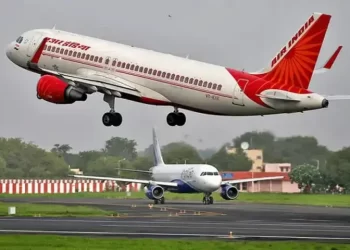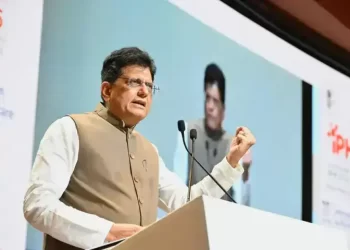KYIV, Ukraine (news agencies) — Ukrainian firepower has been improving since U.S. lawmakers approved a much-needed military aid package this spring, though not quickly enough to halt the Russian offensive in eastern Ukraine.
Although the influx of Western munitions has shrunk Kyiv’s glaring artillery disadvantage, Moscow’s forces are still gaining ground along the snaking front line and will likely continue to do so through the summer, when the drier ground and longer days will only aid their push.
Ukraine is still on the defensive in the Donetsk region, enabling Moscow’s forces to inflict heavy losses during Ukrainian troop rotations and bringing them closer to crucial Ukrainian supply routes.
Kyiv has turned to a bend-but-don’t-break strategy to buy time until it can get more Western weapons and ammunition to the front. By ceding some territory, Ukraine has been able to fight from better defended positions, according to interviews with senior Ukrainian military leaders, soldiers and officers in the field, and analysts.
New weapons and ammunition have been trickling to the front line since U.S. President Joe Biden signed off on the massive aid package in April. But it will take weeks, if not months, for Ukraine to fully replenish its depleted stocks.
“It takes time to load ships that must then cross the Atlantic,” Ivan Havryliuk, Ukraine’s first deputy minister of defense, told media. “But we’re already seeing the (results). Russia’s artillery advantage was 7-to-1 at the start of the year, but is down to 5-to-1 now.”
Havryliuk said that to neutralize Russian airpower, Ukraine needs at least 130 F-16 fighter jets, which he expects to arrive later this year and early next.
“With time, when we set everything up, we will reach an advantage in our airspace,” he said.
The 110th Brigade, which has been fighting near the Russian-occupied village of Ocheretyne, began receiving a trickle of new shells less than a month ago, said Ivan Sekach, a brigade press officer.
The new arrivals have improved the unit’s stocks by 75% compared to last winter, when supplies were so low that the military had no choice but to give up ground to save soldiers’ lives, he said. But they aren’t nearly enough to hold off Russia’s advances and often aren’t the large calibers that are most needed, said Sekach.
“We need four times this amount to operate without counting each shell and prioritizing what to hit,” he said.
Oleksandr, a deputy battalion commander for 47th Brigade who spoke on the condition that only his first name be used in line with his unit’s protocols, said the brigade needs more anti-tank and anti-aircraft missiles.
“We can’t take all the ammunition our partners give us at once — we receive it in portions. And right now, we can’t accumulate what we need,” said Oleksandr, whose brigade has been fighting on the outskirts of Avdiivka, a city in the Donetsk region that Russian troops overwhelmed in February after a grueling campaign.
Ukraine has deployed an elastic defensive strategy to buy time until it’s better armed and provisioned. By making painful choices to pull back to better-defended positions, Ukrainian troops are able to fight more efficiently and save personnel, military officials said.
“Time is in the favor of Ukraine and thus the rationale of an elastic band: You can cede a little territory and gain a little time. And then by the end of this year, Ukraine will have advantages that it’s never had before,” said Dylan Lee Lehrke, an analyst with military intelligence think tank IHS Jane’s.
The strategy stands in contrast to the nine-month-long battle for the salt-mining city of Bakhmut, where Ukrainian troops suffered heavy casualties in an ultimately futile attempt to not cede ground.
Sekach said the improved flexibility has helped Ukrainian forces combat the Russian offensive.
“We had to spread out our positions and our logistics, too. We are doing it a lot smarter now,” he said before adding, “But don’t jinx it,” reflecting Ukraine’s anxiety about Russia’s current battlefield advantage.
Russia’s main offensive in the Donetsk region is focused on the areas around the captured Avdiivka and the town of Chasiv Yar, and it is making small but steady gains. Should Chasiv Yar fall, it would put nearby cities in jeopardy, compromise critical Ukrainian supply routes and bring Russia closer to its stated aim of seizing the entire Donetsk region.
Russia now has about 650,000 troops in Ukraine, which is nearly five times the 140,000 it had there two years ago. And Russian tactical changes have proven effective, sending waves of soldiers from different directions to force Ukrainian forces to expend more shells, attacking more frequently at night to exploit Ukraine’s weaknesses and inability to effectively counterattack, and even having soldiers don blue-striped Ukrainian helmets to confuse enemy drone operators.









